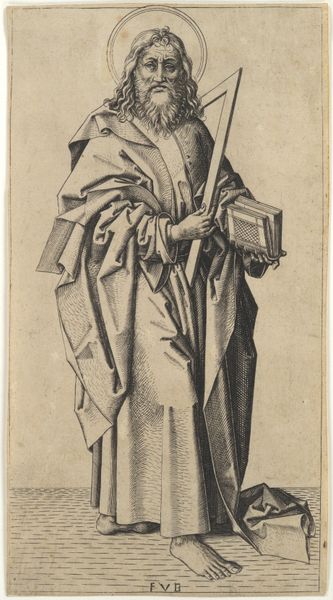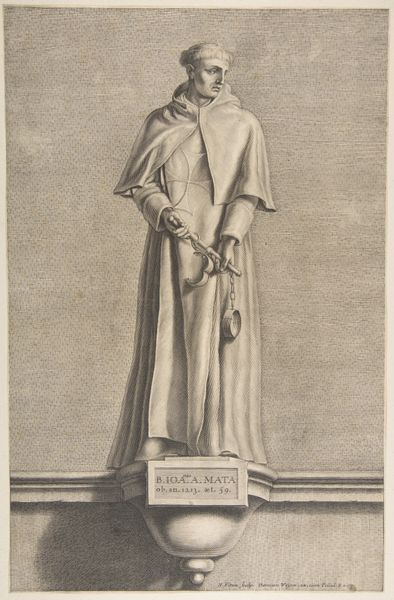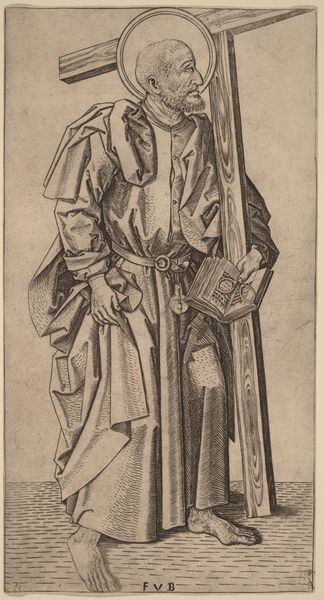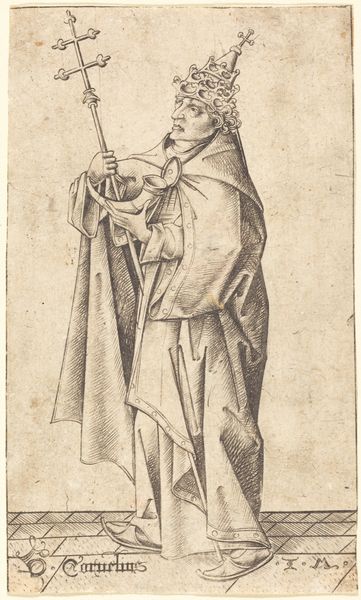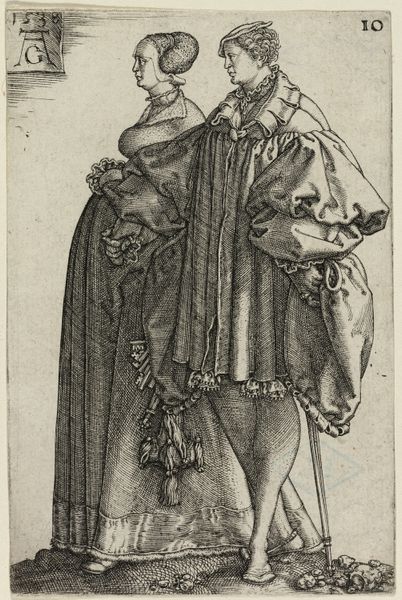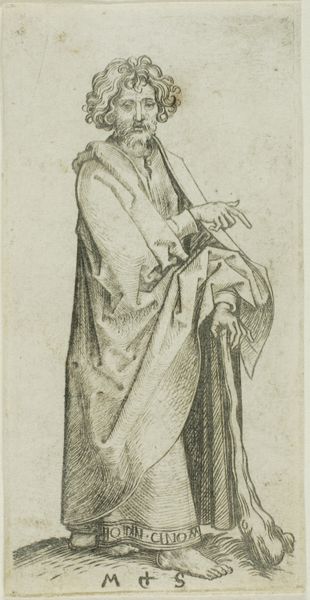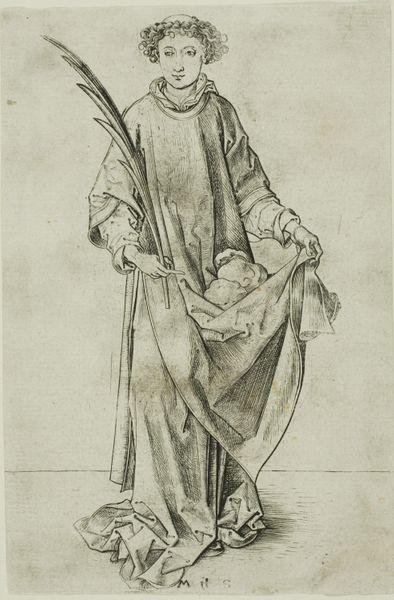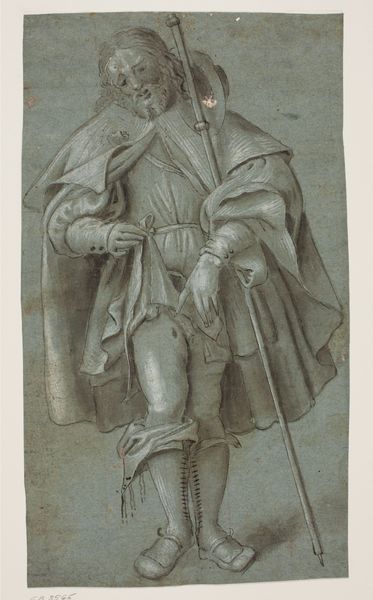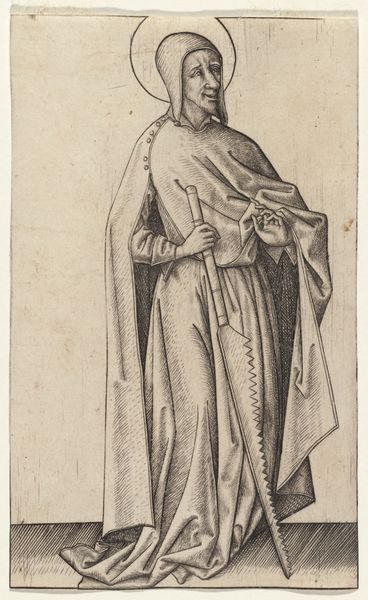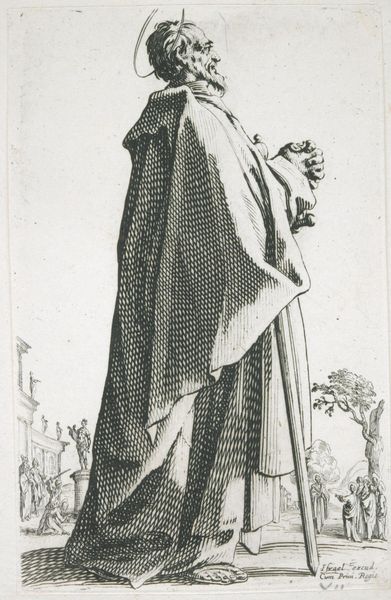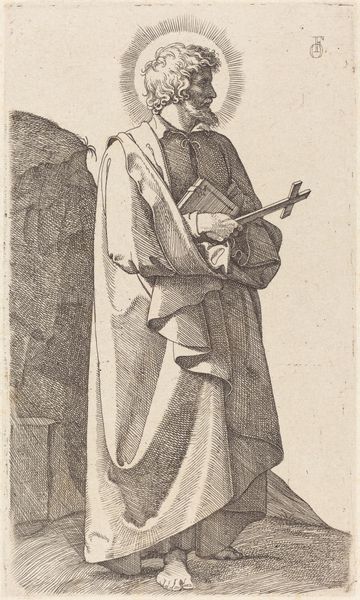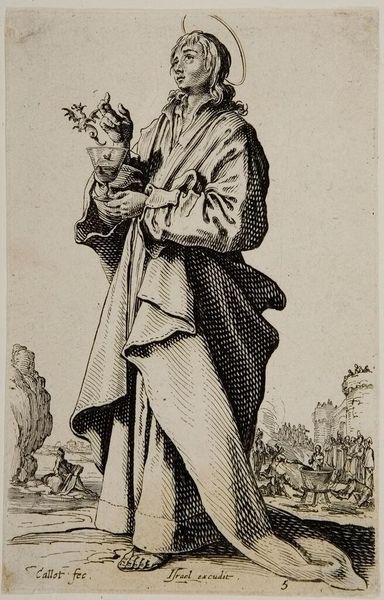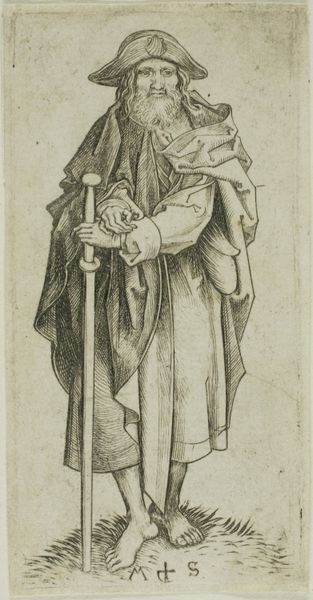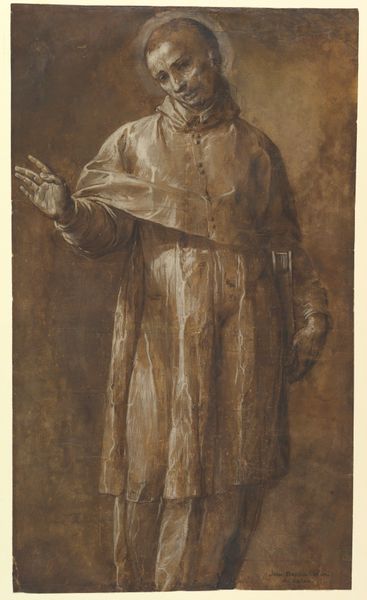
oil-paint
#
portrait
#
oil-paint
#
mannerism
#
oil painting
#
italian-renaissance
#
portrait art
Dimensions: overall: 201.9 x 116.8 cm (79 1/2 x 46 in.) framed: 237.5 x 153 x 8.4 cm (93 1/2 x 60 1/4 x 3 5/16 in.)
Copyright: National Gallery of Art: CC0 1.0
Curator: What a striking portrait. This is Giovanni Battista Moroni’s painting of "Gian Federico Madruzzo," created around 1560, rendered in oil paint. Editor: The muted tones immediately give it a somber feel, almost claustrophobic. The man's stare is direct, but there is something about the color palette, browns, blacks and grays, that makes the overall impression rather subdued. Curator: Well, that subdued palette and the subject's somewhat stiff pose are typical of the Mannerist style, which emphasized artifice and refinement. This wasn’t about capturing a spontaneous moment but about projecting status and power. The Madruzzo family, powerful within the Church, certainly benefited from this careful construction. Editor: Power, absolutely. It’s visible in the sumptuous furs and fine fabrics. Even his hands are positioned to project authority: one holding what seems to be the hilt of a sword and the other directing downwards, perhaps showing him to be in control. But look also at how the inclusion of the small dog undercuts this sense of perfect control, even offering a different representation of masculinity and ownership. Curator: The dog is an interesting detail, adding a touch of domesticity to an otherwise formal portrait. Such objects are markers of identity. As is the sword. Such references indicate military command. It really shows how Renaissance portraits functioned as carefully curated displays of identity. Editor: That is something I keep questioning: who curates such identity displays? How much of this portrait reflects Moroni’s positioning to the politics of representing this historical figure? Also, how were such representations conceived in gender and race specific terms? The questions are endless. Curator: Agreed, these portraits are complex visual documents shaped by many forces. Moroni had to balance artistic trends, the patron's desires, and the prevailing social expectations. He produced more than just a likeness, but rather an idea. Editor: It certainly pushes us to think critically about the relationship between art, power, and the construction of identity in early modern Europe. The dog is also rather cute. Curator: Indeed. There's much more beneath the surface. Thanks for these enriching insights.
Comments
No comments
Be the first to comment and join the conversation on the ultimate creative platform.
